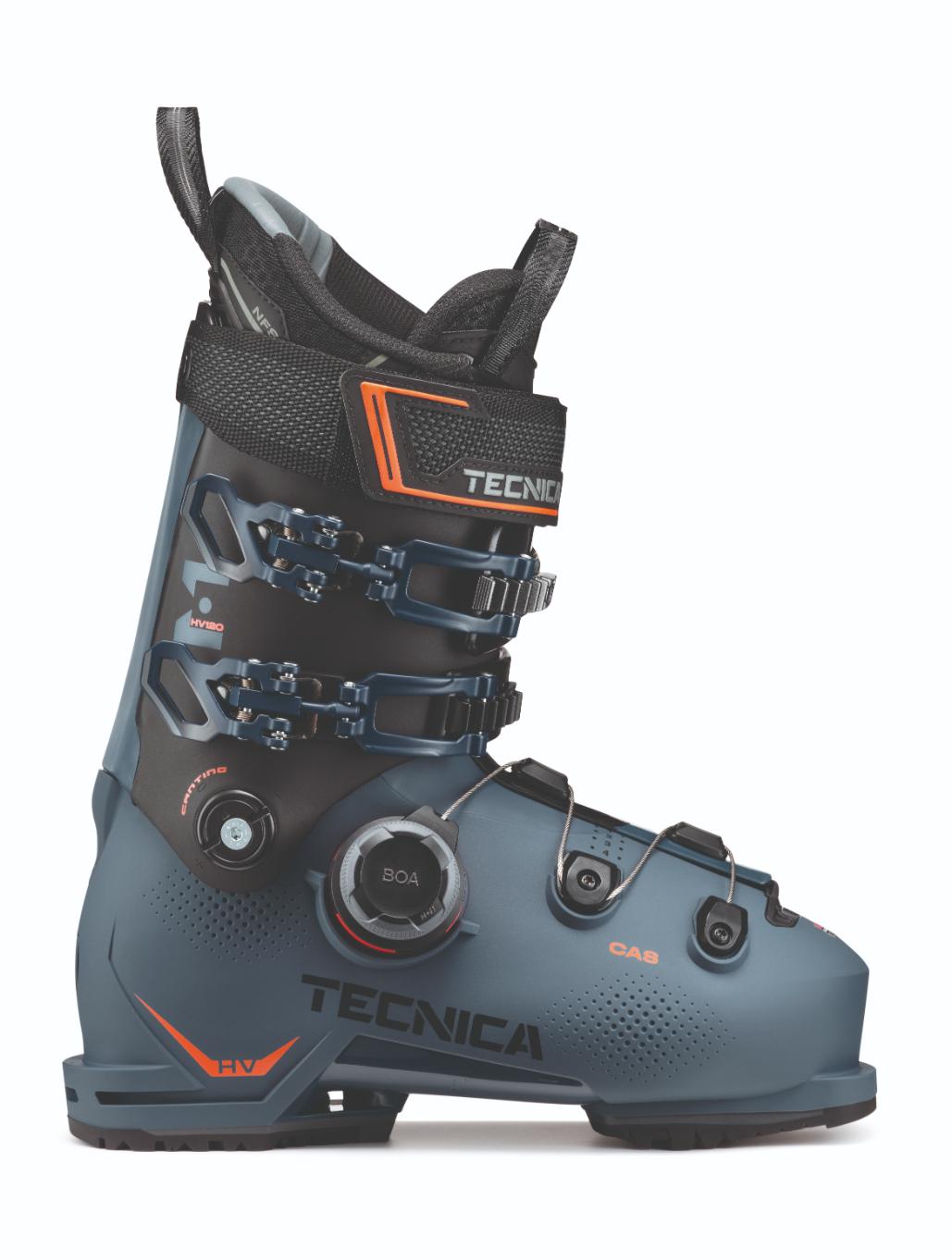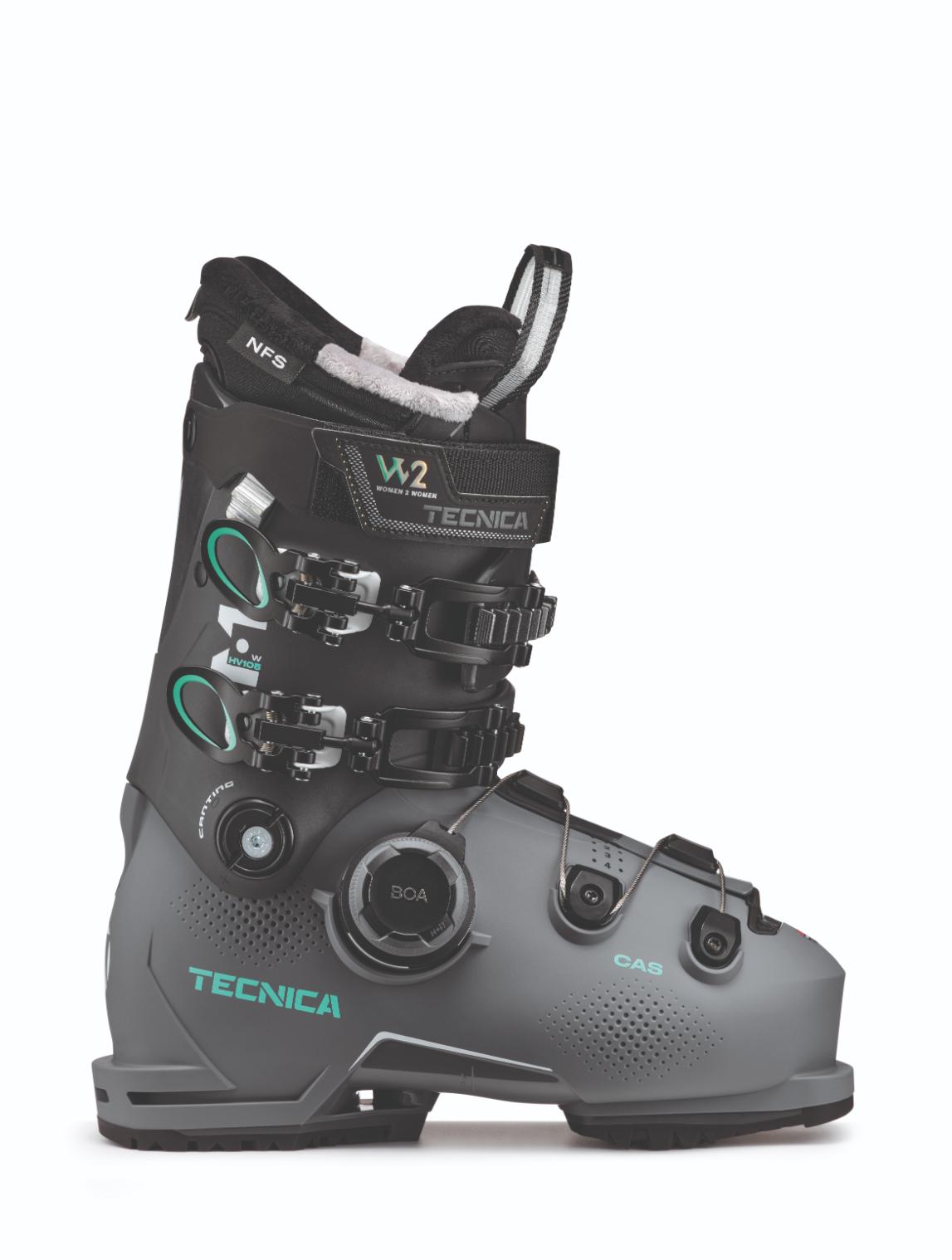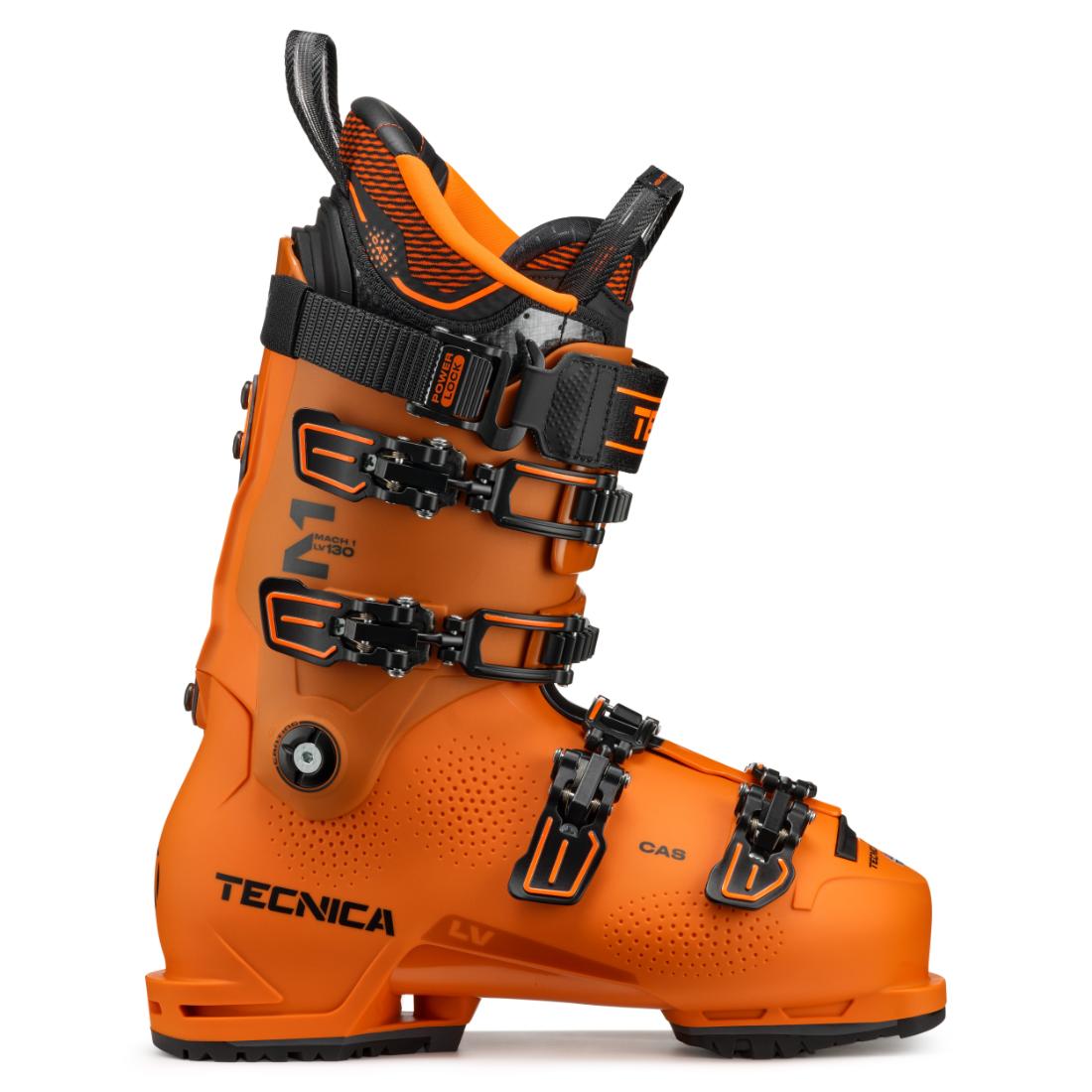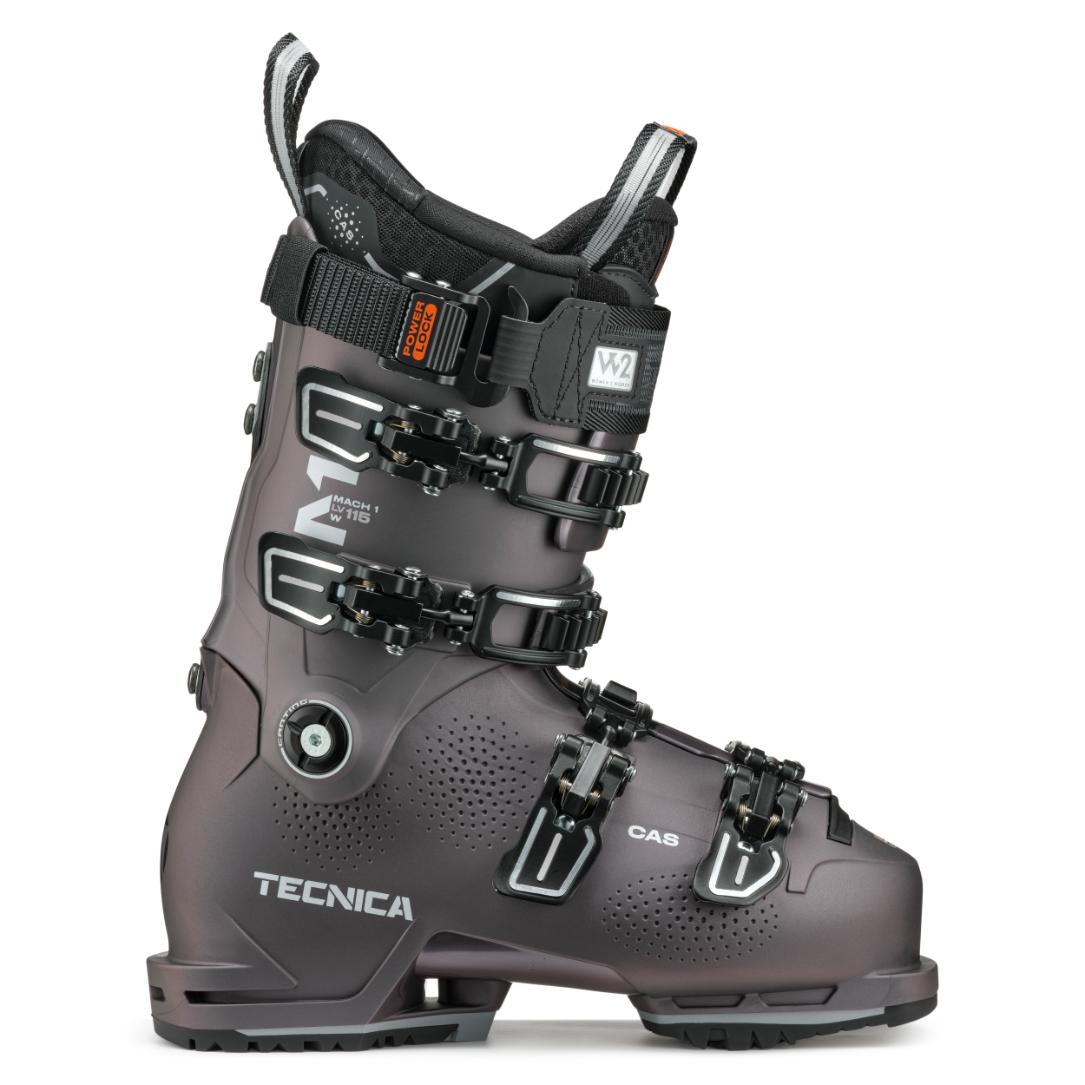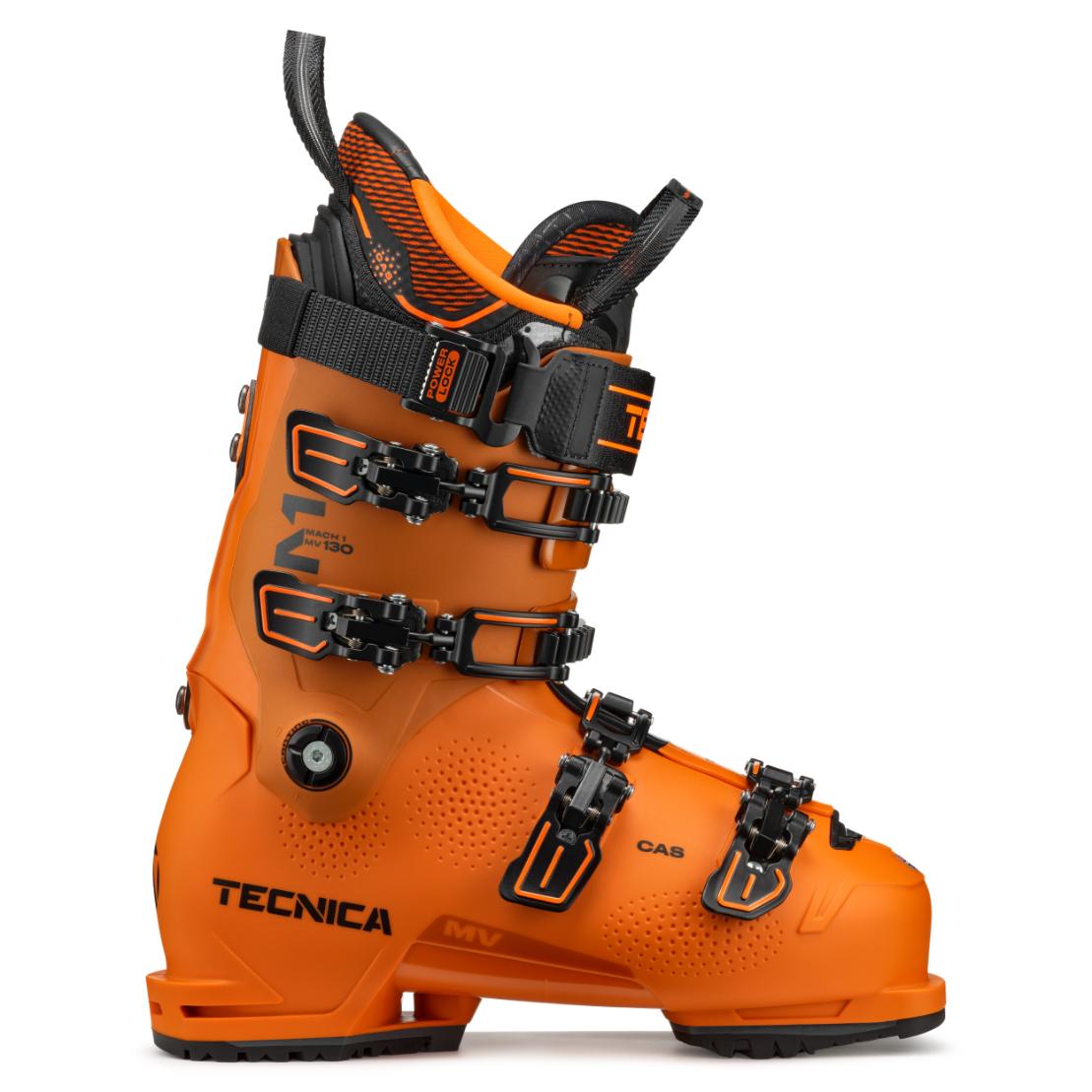Roughly a decade ago, Tecnica was at a point in its evolution where it had to change. The brand still had market mojo, but the line was due for an upgrade. Once a brand decides it needs new molds, all ideas are on the table until eliminated in the R&D cage match that is product development. The usual approach is to find some nugget that was previously shelved, make some prototypes and pass them around to cognoscenti for their comments.
Tecnica took a different tack. It assembled the cognoscenti, but instead of displaying an array of half-baked possibilities, its marketing team displayed only curiosity: what should the next performance boot look like? What features should it have? How can we make it easier for bootfitters to modify it?
The result was the Mach 1 series, boots made for high performance recreational skiing and the technicians who fit them. If there’s one feature that defines the current Tecnica, it’s Custom Adaptive Shape (C.A.S.), the primordial link between ski, shell, liner and skier that determines the success of any ski experience. C.A.S. isn’t just an anatomical shape, but a fit methodology and a means of modifying the liner and/or shell without impinging on its structural integrity.
In a market besotted by heat molding, Tecnica has by and large stuck to its own customization methods for a very simple, yet compelling reason: their boots ski brilliantly just as they are. The fit process may not involve an oven, but the results are hard to ignore: the Mach 1 and Cochise are undeniably among the best boots in their respective categories.
Four years ago, Tecnica concocted a means of distorting the carbon fiber in the upper cuff of a new C.A.S. design made specifically for women. By bringing adaptability to the one feature that defines a women’s boot, cuff height, Tecnica is able to raise the rear spoiler height and increase its forward lean on its top Mach 1 W models. This brilliant, contrarian move instantly elevated Tecnica’s entries in the women’s high-performance market.
Three years ago, Tecnica updated its medium-volume Mach 1 MV with what has become the Mach 1 collection’s signature feature: T-Drive, a link attached to the spine that connects the lower shell and cuff. Two years ago, T-Drive’s bundle of benefits was applied to the narrow-lasted Mach1 LV family (including the Mach 1 LV W), and last year Tecnica completed the line transformation by adding T-Drive to the Mach 1 HV series. In all three lasts, T-Drive manages both how and to what degree the boot flexes while minimizing the usual shell deformation by 20%.
Two years ago, the big news at Tecnica was the rejuvenation of its hybrid, hike-mode models, the Cochise collection. A new, more anatomically accurate last allowed the Cochise to shed 10-15% in total weight while continuing to use a PU shell that is superior in several ways to the nylons that predominate in the hiking realm.
The biggest advantage Cochise models have over the usual hiking fare is they ski better. There’s nothing second-rate about the Cochise’s climbing properties, but it’s the downhill performance that sets it apart. The medial shell wall is thicker than the exterior panel, for more power to the edge, an enhancement most other hike-mode models eschew.
Among the latest Cochise design’s bundle of benefits is a hike-mode mechanism called T-Ride. Neatly integrated into the spine, T-Ride’s long lever arm adds strength and power, and the ability to lock-out the hike mode during descent provides an added measure of security for the aggro skier who didn’t climb to the top just to poke his or her way down.
In 2024, Tecnica completes the evolution of its Cochise collection by adding a high-volume (HV) iteration, with a 102mm last. The hike-to-ski market has been slow to embrace the need for a wide-body boot, perhaps because historically it has been a market segment populated by ectomorphs. The Cochise is one of the rare hybrids that can be selected primarily for fit properties; in other words, it’s a great skiing boot even if it never leaves the resort.
The Cochise HV debuts with three men’s models and two for women. Another option for the woman who knows how to arc ‘em is the a new Mach1 MV W in a stout 115 flex.
The makers of all ski hard goods are justifiably concerned about sustainability, but not many are doing as much about it as Tecnica. In 2024, the entire Cochise series will include recycled components, some of which were recycled through Tecnica’s Recycle Your Boots program and other sources.
The 2025 Season
Last year, Tecnica was one of the few major boot brands that didn’t succumb to the BOA wave that swept through the boot market. For 2025, Tecnica is giving BOA a go in its Mach1 HV collection, the only company to use a high-volume boot for its first and only BOA-equipped model. It’s an interesting choice, partly because Tecnica tries to maintain the same shell dynamics in its widest boots as it delivers in its LV versions, already a step ahead of the field in HV world. (Wide boots tend to distort more when flexed, so shell walls need to be stouter than they usually are.)
Tecnica continues to offer its Mach1 HV models sans BOA, with flexes that are a shade stiffer than the HV models with BOA. The BOA forefoot retention system comes at a $50 premium, roughly in line with the rest of the market.

